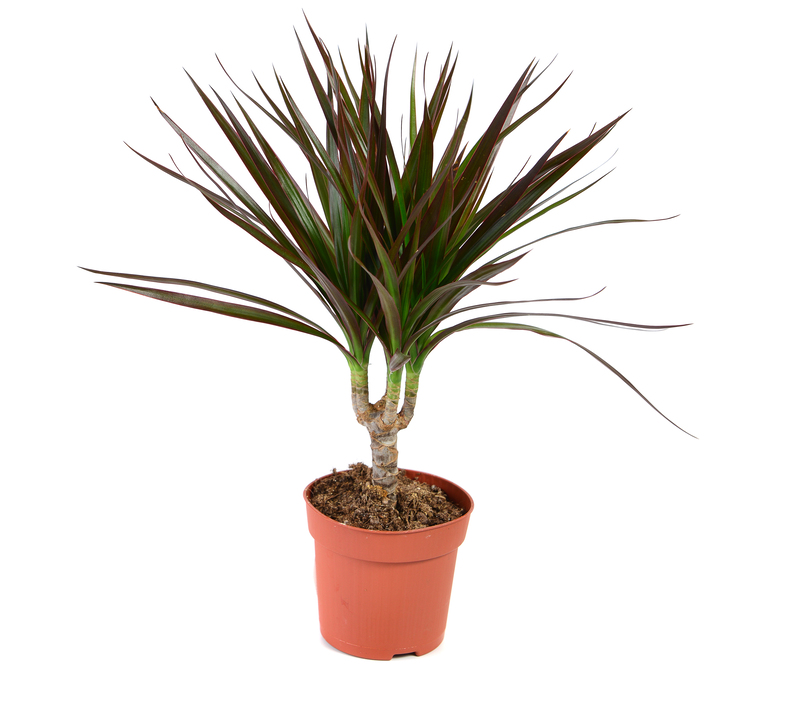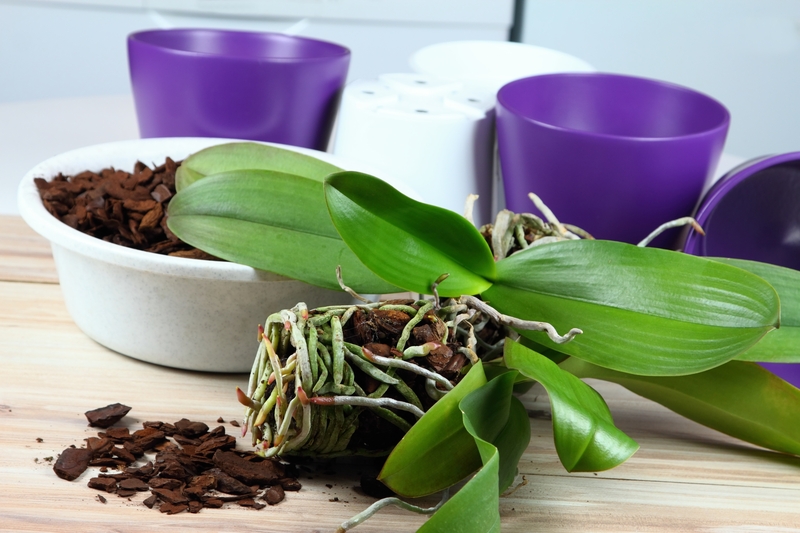Gardening in High Winds: Master the Art of Protection
Posted on 31/05/2025
Gardening in High Winds: Master the Art of Protection
Gardening is a rewarding endeavor, but it becomes even more challenging when you add the element of high winds. Blustering gales can uproot delicate plants, damage mature shrubs, scatter debris, and undo months of hard work. However, with the right strategies, gardening in high winds can still yield a lush, productive garden. This comprehensive guide will equip you with everything you need to protect your garden from wind damage and ensure a thriving outdoor space.
Understanding the Impact of High Winds on Your Garden
Before crafting a plan for wind protection for gardens, it's crucial to understand how winds affect your garden environment. Strong winds can:
- Physically damage plants by breaking stems, snapping branches, and uprooting young saplings.
- Increase transpiration, causing plants to lose water faster than they can absorb from the soil.
- Dry out the soil, leading to moisture stress and hindering root development.
- Spread pests and diseases over a wider area.
- Cause abrasion or leaf burn by flinging sand, debris, or salt against foliage.
Understanding these threats helps in devising effective wind garden protection strategies that are not only effective but also sustainable in the long run.

Choosing the Right Location: The First Step to Wind-Resistant Gardening
Site selection is your garden's first line of defense against gusty winds. Consider these essential tips:
1. Observe the Wind Patterns
Every landscape is different. Take time to note the direction and intensity of prevailing winds. Try marking areas of the garden that feel particularly exposed or sheltered. This knowledge will inform where best to plant wind-sensitive species or install protective structures.
2. Plant in Sheltered Spots
If your property naturally offers protection (e.g., beside a house, fence, or hedge), make use of these areas for your most vulnerable plants. Microclimates created by buildings and walls can often offer respite from relentless winds.
Strategic Windbreaks: Nature's Shield
One of the most effective ways to protect your garden from high winds is through the use of windbreaks. These barriers interrupt and slow air movement, diffusing the wind's force and giving your plants a fighting chance.
Natural Windbreaks
- Trees and Shrubs: Planting a dense row of evergreens or deciduous shrubs creates a natural screen that filters the wind, rather than stopping it abruptly (which can cause turbulence and increase damage).
- Hedges: Thick, bushy hedges such as privet, boxwood, or yew are both ornamental and functional as windbreaks, providing year-round garden protection.
Artificial Windbreaks
- Fences: Permeable designs (lattice, slatted, or woven fences) break and slow the wind down more efficiently than solid barriers, which can create damaging wind eddies.
- Temporary Solutions: Burlap screens, shade cloths, or even cut reeds can be erected during particularly windy seasons.
When installing windbreaks, remember to position them so they cover the side of your garden that faces the prevailing wind. Leave a gap between the barrier base and the ground to prevent wind from being forced under and causing ground-level turbulence.
Designing a Windproof Garden Layout
Layout and design are crucial not only for aesthetics but also for resilience. Thoughtfully grouping and staggering your plants can significantly mitigate wind damage.
Layering Plant Heights
Arrange plants in tiers from tallest to shortest, starting from the windward side. Taller, sturdier species deflect much of the wind's force, sheltering more vulnerable crops behind them.
Dense Plant Spacing
Close planting helps provide mutual support for stems and branches, reducing the risk of breakage in high gusts. This also minimizes soil exposure and conserves moisture.
Using Raised Beds and Structures
Raised garden beds edged with wood, stone, or woven branches create minor barriers and can be positioned to further shield delicate plants.
Choosing Wind-Resistant Plants
Not all plants endure high winds equally. Selecting wind-resistant varieties adds another layer of defense. Here are some characteristics to look for:
- Tough, flexible stems that can bend without breaking
- Narrow leaves that present less resistance to the wind
- Low-growing or groundcover species that are naturally less exposed
- Deep root systems for stability
Examples of Wind-Tolerant Plants
- Trees: Acacia, hawthorn, rowan, willow, and pine
- Shrubs: Privet, Euonymus, grevillea, escallonia, and berberis
- Perennials: Lavender, sage, rosemary, sedum, and daylily
- Ornamental Grasses: Miscanthus, feather reed grass, fescue
For vegetable gardens, crops like kale, spinach, chard, and carrots handle wind better than tomatoes or zucchini.
Soil Solutions for Windy Gardens
Protecting the soil is as important as protecting your plants. Wind erosion can deplete topsoil and dehydrate beds rapidly.
Mulching for Moisture and Stability
- Organic Mulches: Apply a thick layer of straw, wood chips, or bark to sheltered beds for maximum moisture retention.
- Living Mulch: Fast-growing groundcovers, such as clover or creeping thyme, lock in soil moisture while suppressing weeds and reducing wind erosion.
Soil Amendment
Enriching your soil helps anchor roots more firmly so plants are better equipped to withstand buffeting winds. Add compost or well-rotted manure to improve soil structure and drainage.
Staking and Supporting Your Plants
Sometimes, even the sturdiest garden needs a helping hand. Staking is one of the oldest and simplest forms of plant wind protection.
- Stake tall or top-heavy flowers such as delphiniums, sunflowers, and gladiolus using bamboo canes or wooden rods.
- Use soft plant ties or old nylon stockings so as not to bruise stems while allowing some flexibility for natural movement.
- Consider support cages for bushy tomatoes, peppers, or young trees threatening to list in strong gales.
Wind-Proofing Young and Newly-Planted Trees
Young trees are especially vulnerable in gardens exposed to high winds. Their roots haven't yet established, and trunks are flexible but fragile. Here are steps to ensure their survival:
- Stake trees but don't over-tighten; allow some trunk movement to develop strong wood.
- Use tree ties or webbing at least one-third of the way up the trunk, securing to stakes driven outside the root ball.
- Mulch around the base (but not against the trunk) to prevent moisture loss and weed growth.
- Reassess staking annually and remove as soon as the tree can stand on its own.
Protecting and Repairing Plants After a Windstorm
Even with the best preparation, some damage may occur. Effective post-storm care helps your plants bounce back faster:
- Prune damaged stems and branches to prevent disease and encourage healthy regrowth.
- Re-firm any plants uprooted or leaning by wind, gently pressing down soil around the root ball.
- Water stressed plants deeply, as winds can dry out both foliage and soil.
- Replenish mulch if it's blown away to continue protecting roots.
- Monitor for signs of pests or diseases, which can take advantage of weakened plants.
Using Wind as a Gardening Ally
While most gardeners regard wind as a challenge, it also offers benefits:
- Disease prevention: Air movement helps reduce humidity around plants, decreasing fungal infections.
- Pollination assistance: Some crops (like corn) rely on wind-pollination.
- Temperature regulation: Wind can help cool plants in hot climates.
By carefully managing wind, you can create a healthier, more resilient garden environment.
Expert Tips for Windy Gardeners
- Plant a succession of windbreaks of varying heights to rinse and repeat the slowing effect of natural barriers.
- Regularly inspect fences and supports for signs of wear and repair as needed.
- Install permeable wind barriers rather than solid ones to reduce damaging turbulence.
- Switch to drip irrigation systems to ensure consistent soil moisture, since overhead watering is less effective during windy days.
- Create paths, patios, and sitting areas in more protected parts of the garden for enjoyment even during gusty spells.

Frequently Asked Questions About Gardening in High Winds
What type of fence is best for windy gardens?
A lattice or slatted fence is superior for wind protection because it allows some air to pass through, minimizing turbulence and pressure on the barrier itself.
How far from the garden should I plant a windbreak?
Ideally, situate a windbreak at a distance equal to 5 to 10 times the height of the barrier on the windward side, ensuring enough space for slowed air movement to benefit your plants.
Can high winds improve my garden at all?
While they pose challenges, moderate winds help deter fungal diseases and pests, support pollination, and regulate temperature. Harness these positives by building in strategic wind management!
How can I quickly protect young plants during an unexpected storm?
Cover fragile seedlings with garden cloches, buckets, or even overturned pots. For larger beds, use temporary screens of burlap or shade netting, securely anchored at all sides.
Conclusion: Master the Art of Gardening in High Winds
*Gardening in windy conditions doesn't have to mean sacrificing your green dreams*. With careful planning and the right wind garden protection strategies, you can turn even the most blustery plot into a thriving oasis. Remember to combine strong windbreaks, thoughtful plant selection, proper staking, and diligent aftercare for lasting success. Embrace the challenge, and you'll discover resilience and beauty in your garden, whatever the weather brings!
By following these expert-tested techniques for gardening in high winds, you'll not only protect your plants but also enjoy a robust, beautiful garden year-round.

